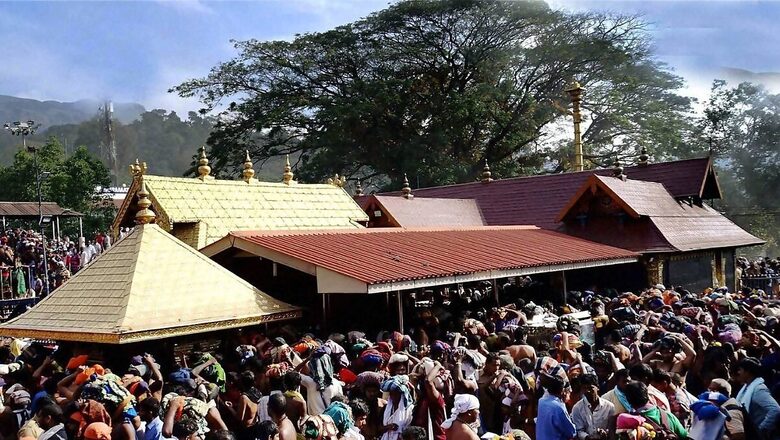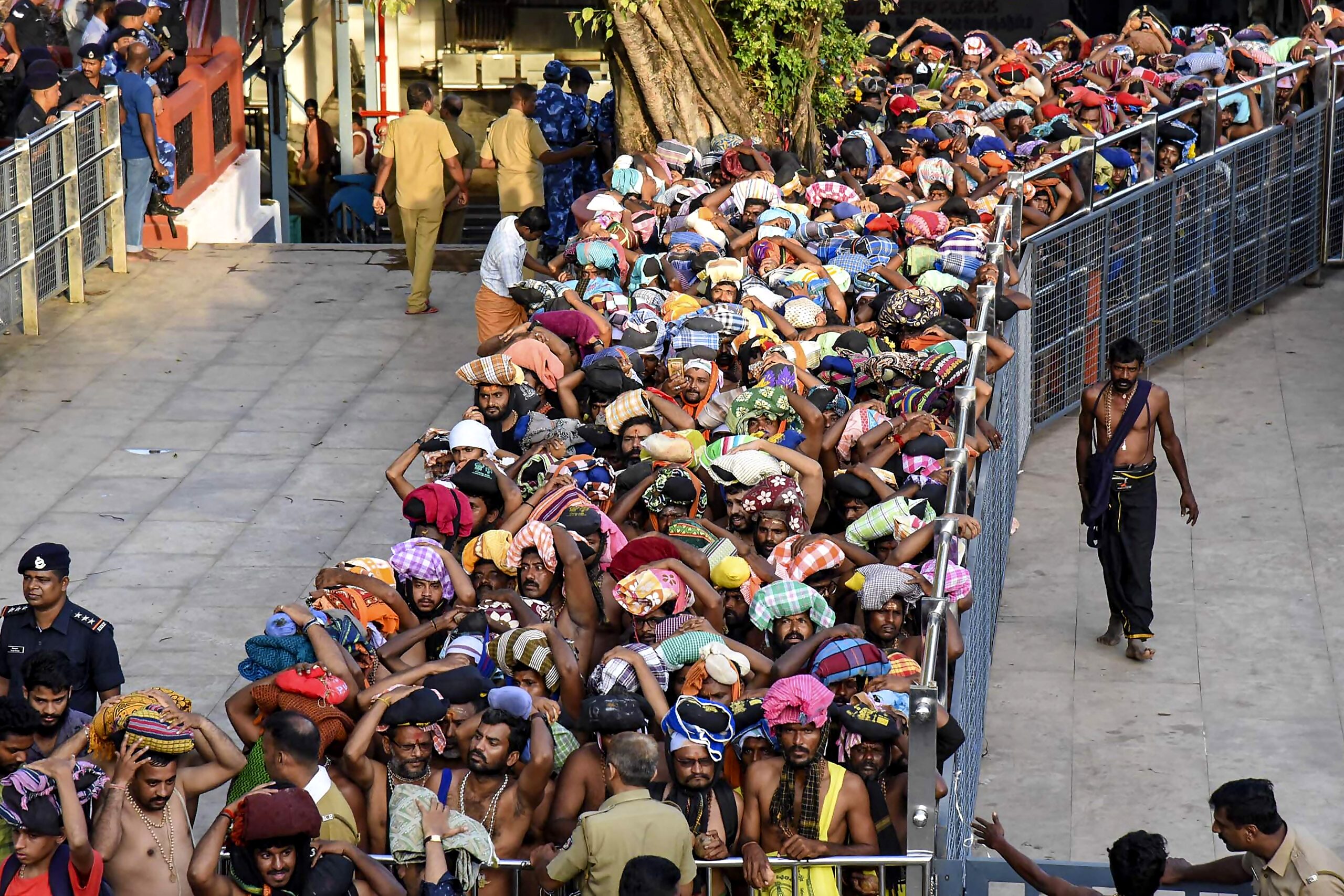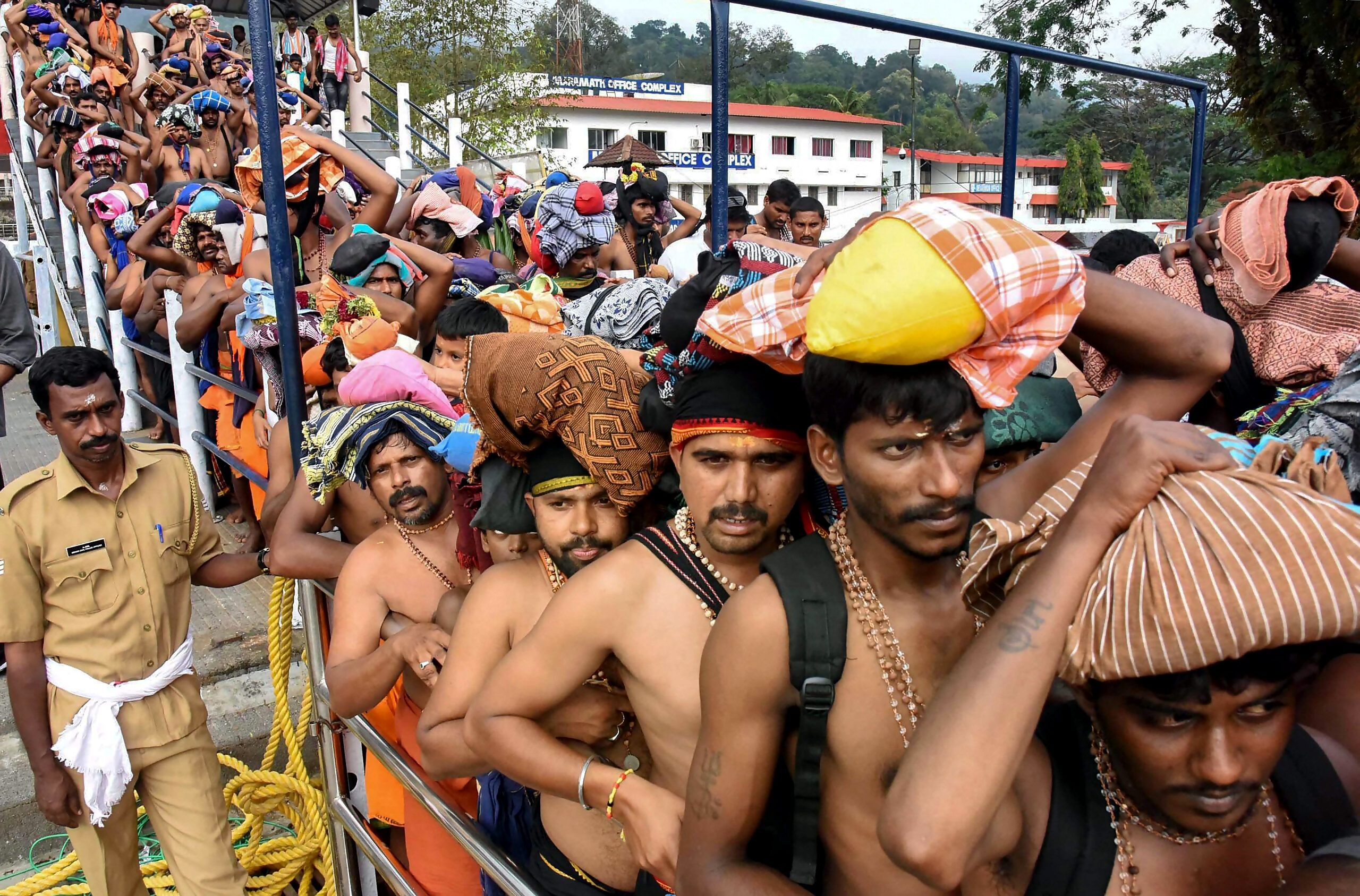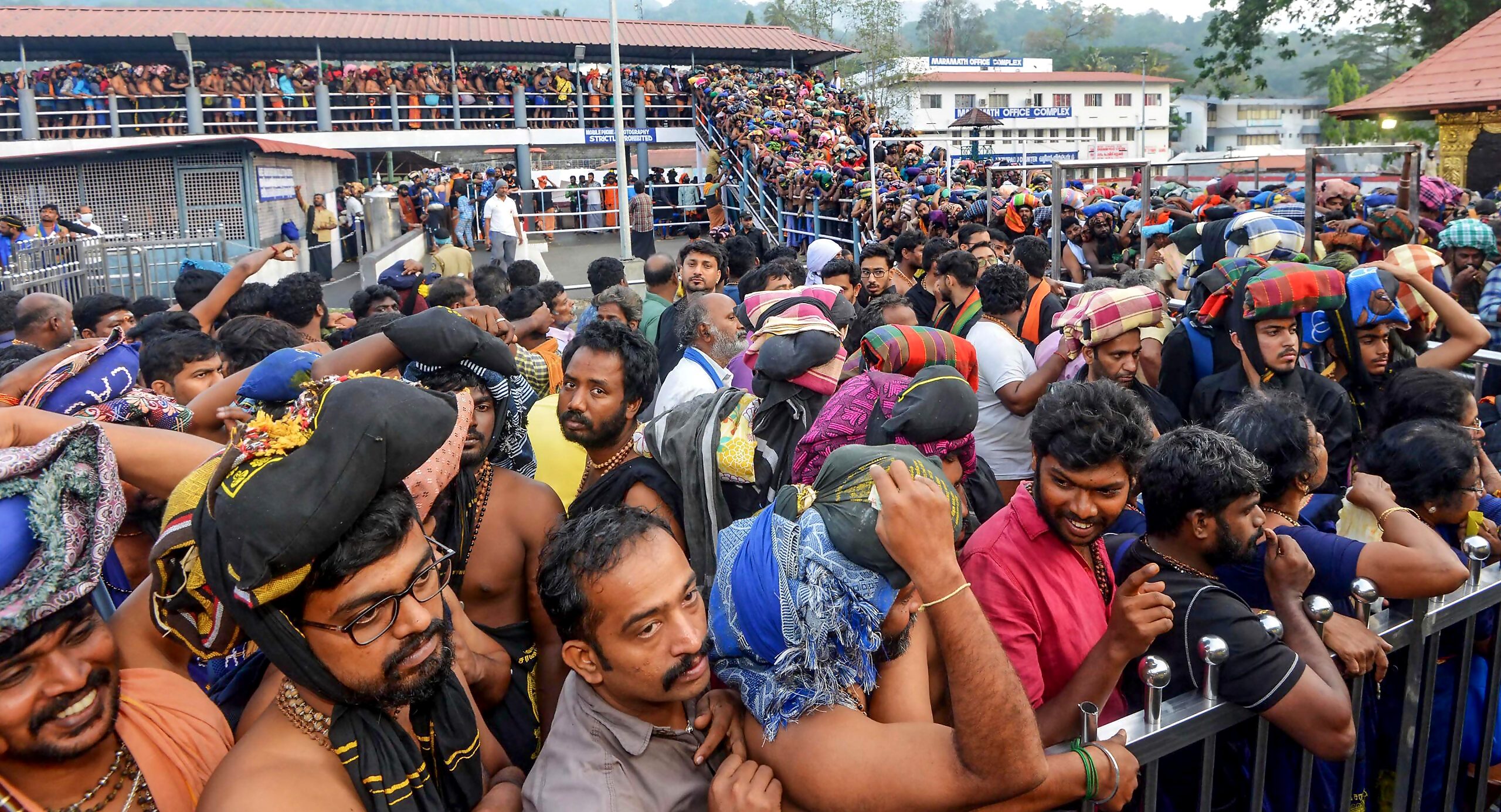
views
Sabarimala Shrine in Kerala is witnessing a huge footfall this month leading to chaos and anger among the pilgrims as many of them have to turn back without completing their pilgrimage.
The pilgrims, who hailed from Tamil Nadu, Karnataka and parts of Kerala, blamed poor management for the visitors and claimed that they had to wait in queue for as long as 10-12 hours.
An average of 62,000 pilgrims visited the hill shrine daily during the first 19 days of the Mandala Pooja season, however, the number increased to 88,000 in the four days since December 6 and this was the cause of the huge rush, a statement from Kerala Chief Minister Pinarayi Vijayan’s office said on Tuesday.
The chaos and lack of facilities at the shrine has led to a political fight with the opposition Congress and the BJP alleging the government of not providing basic facilities for the pilgrim. The Kerala High Court has also directed the authorities to ensure support to the Sabarimala pilgrims who reach the shrine and to provide adequate parking facilities for the vehicles.
News18 takes a look at the reasons behind the sudden increase in pilgrims in Sabarimala and the challenges authorities have to face:
Annual Pilgrimage Season in Sabarimala
The annual 41-day Mandalam-Makaravilakkku pilgrimage to the hill-top shrine began on November 16, the first day of the auspicious Malayalam month of Vrichikam. The Mandala Kalam’ is an auspicious period of worship that begins on the first day of the Malayalam month ‘Vrischikam’ in mid-November.
Rituals will be held until the day of Mandala Puja on December 27 and the temple will be closed at 10pm.

In order to ensure a safe and smooth pilgrimage for all devotees, the government had introduced a dynamic queue-control system this season to manage crowding at ‘sannidhanam’.
The authorities also increased the ‘darshan’ timings at the Lord Ayyappa shrine by an hour from 3 pm to 11 pm instead of from 4 pm to 11 pm following an increase in devotees.
Huge Crowd in December
The month of December receives unusual footfall every year due to the annual pilgrimage season Mandalam-Makaravilakkku. This year the figure has touched around 90,000 and may go higher.
However, this year footfall is not a record high as last year a maximum of 1.07 lakh devotees visited the temple on December 12.
Similarly on December 13 and 14 in 2022, the temple witnessed a footfall of 77,216 and 64,617 devotees respectively.

This year too, an average of 62,000 pilgrims visited the hill shrine daily during the first 19 days, and 88,000 pilgrims visited since December 6, during the Mandala Pooja season, a CMO statement said.
CM Pinarayi Vijayan has directed the officials concerned to ensure a more coordinated system to manage the heavy rush and provide necessary facilities for pilgrims at the hill shrine.
Why Managing Huge Crowd is Difficult?
There are several reasons:
- Pilgrims who stand in the queues for long hours often lose their patience and try to breach the queue.
- Those who successfully cross the barricades and reach Pathinettam padi result in uncontrollable rush at near the holy steps.
- Due to the long queue from Sannidhanam to Sabaripeedam, the authorities restricted the pilgrims at Pamba. As a result, the vehicles for pilgrims are restricted at places like Erumeli, Pamba, Nilackal and Elavunkal, further resulting in long queues of vehicles.
- Even though when there is no heavy traffic on the saranapatha, which is the hill route from Pampa to sannidhanam, the traffic congestion is severe in paths leading to Pampa.
- Though it is expected that 4,200 people passing through the holy 18 steps every hour, the actual rate is between 3,800 to 3,900 per hour as around 30% of the devotees are elderly people and children.
Why Doesn’t Sabarimala Accommodate Huge Crowds
Sabarimala shrine is located in the Western Ghat mountain ranges of Pathanamthitta District in Kerala. The Ayappa temple in Sabarimala is located at an altitude of 914 metre and is a long uphill journey on foot though forests and rough terrain.

There are several routes to reach Sabarimala including Erumeli route, Vandiperiyar route and the Chalakayam route. While Erumeli is considered the traditional path believed to be the one taken by Ayyappan is also the toughest of the lot, requiring a trek of about 61 km through forest and hill tracks.
The easiest route to the hilltop shrine is via Chalakkayam, by which one can reach the banks of the river Pamba by vehicle. Pamba is the main halting point on the way to Sabarimala, after which one has to trek 4 to 5 kms to reach the temple.
The hilly terrain and the long trek are the reasons why the crowd management becomes more difficult task.

















Comments
0 comment